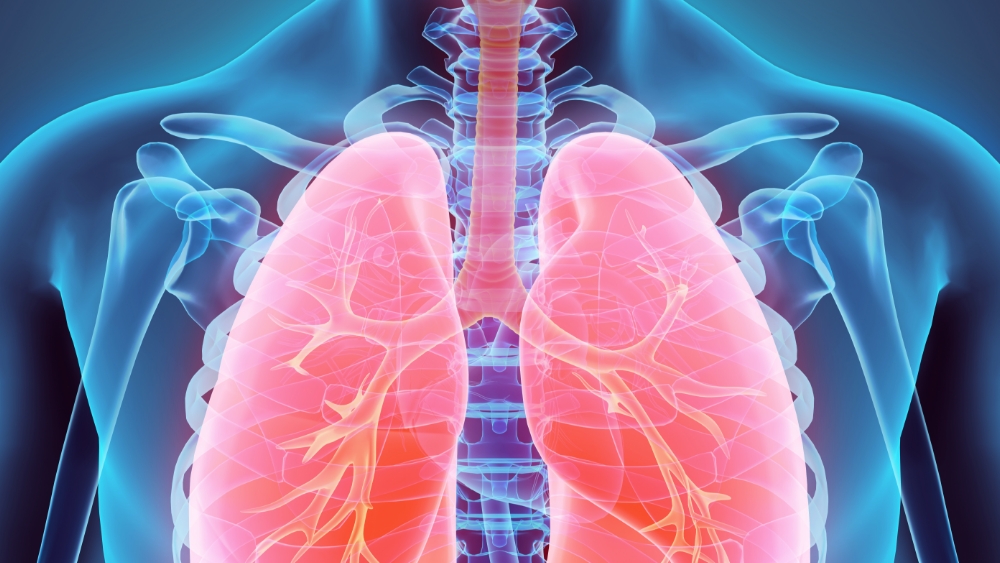
The lung-on-a-chip, a miniature model of a human lung on a microchip, was used in a study to learn how the lung’s mechanical breathing motions help boost immunity to viruses.

The lung-on-a-chip, a miniature model of a human lung on a microchip, was used in a study to learn how the lung’s mechanical breathing motions help boost immunity to viruses.
What you need to know
Scientists researching viruses like influenza or SARS-CoV-2, the virus that causes COVID-19, have often had to study how diseases work and test drugs using animals or cell cultures, a technique in which cells are removed from living organs and grown under controlled conditions. However, using animals or cell cultures to predict how effective a drug can be in the human respiratory tract poses challenges. Drugs that may seem to be safe and effective in these experiments can be harmful or ineffective in humans.
This prompted a research team led by Dr. Donald Ingber at the Wyss Institute at Harvard University to develop “lung-on-a-chip” models that may help us better understand diseases, test drugs, and develop new therapies. The chips are based on techniques from the computer industry and tissue chip engineering. About the size of a memory stick, they model human organs such as the liver, heart, and lungs.
In a study supported in part by NIH’s National Heart, Lung, and Blood Institute, researchers used this technology to learn how the lung’s mechanical breathing motions help boost immunity in the organ’s tissue against viral infection.
What did the researchers do?
In prior studies, the team used a chip to model viral infection and to observe immune responses in the human upper airway, the area between the nose or mouth and the windpipe.
For this study, researchers used a new lung alveolus chip — named for the tiny cup-shaped cavities that take in the oxygen you breathe. They wanted to see how the motion of breathing affects infection in the deepest parts of the lung. The chip has a flexible membrane that mimics a tiny set of alveoli. By applying suction to the chip, researchers made the membrane stretch and relax rhythmically, like the alveoli in our lungs do during breathing.
The new study used the H3N2 strain of the influenza virus, a leading cause of lung infections, hospitalizations, and deaths. When it was added to the chip, the virus caused tissue damage and cell death. In response, the tissue activated an injury and repair process to combat the virus.
The team compared the lung chip’s response with and without breathing movements. They found that genes involved in the immune response to the virus were more active in the lung tissue when the alveoli moved, as in breathing.
Why is this research important?
The human alveolus chip can model not only the breathing motions of the lung but also immune responses to infection. This allows researchers to look at the deep parts of the lung where infections are often more severe and can lead to hospitalizations and death.
Research using this kind of experimental lung model can help scientists repurpose existing drugs, understand disease pathology, and develop new lifesaving therapies to face the current COVID-19 pandemic as well as other respiratory viruses with highly infectious capabilities.
Where can I go to learn more?
How breathing activates lung defenses against viruses
-
An article in NIH Research Matters further explains the results of this study.
Airway-on-a-Chip: Speeding Up COVID-19 Treatment Testing
-
Dr. Donald Ingber explains how using an airway chip could help in the search for new treatments for COVID-19.
Lung Tissue Chips Could Help Predict Future Infectious Influenza Disease Variants
-
A study supported by the National Center for Advancing Translational Sciences (NCATS) used a lung tissue chip to replicate how influenza viruses evolve as they travel from person to person.
Sources
Bai, H., Si, L., Jiang, A., Belgur, C., Zhai, Y., Plebani, R., Oh, C. Y., Rodas, M., Patil, A., Nurani, A., Gilpin, S. E., Powers, R. K., Goyal, G., Prantil-Baun, R., & Ingber, D. E. (2022). Mechanical control of innate immune responses against viral infection revealed in a human lung alveolus chip. Nature Communications, 13(1), 1928. https://doi.org/10.1038/s41467-022-29562-4

News and Stories
Read stories about the efforts underway to prevent, detect, and treat COVID-19 and its effects on our health.
 An official website of the United States government
An official website of the United States government

